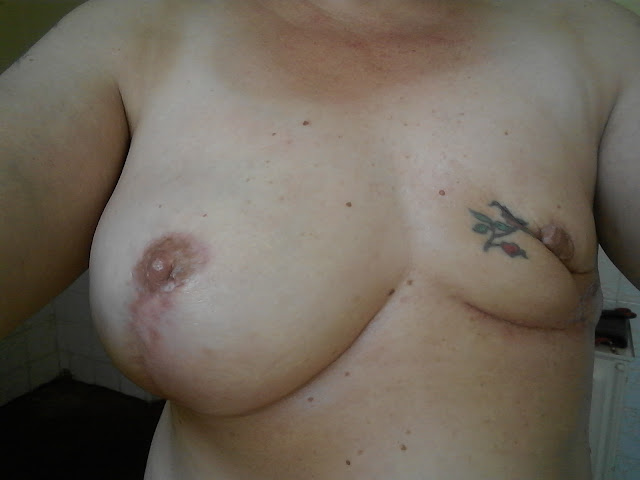Different surgical options for breast cancer
October is breast cancer awareness month, and in today's article,
I will be writing about the different surgical options that are available to
breast cancer patients to remove a tumour.
Being diagnosed with breast cancer does not automatically mean you will require a mastectomy. A mastectomy is the total removal of the breast organ on one side, and a bilateral mastectomy is when the surgeon removes both the breast organs.
"There are certain times when one has to perform a mastectomy," explains Dr Charles Serrurier, a specialist cosmetic and reconstructive plastic surgeon in Rosebank, Johannesburg. "If it is a large tumour or when cancer appears over large areas of the breast, a mastectomy is the best option."
 |
| Figure 1 |
When the cancer is severe, like my own diagnoses, specialist surgeons almost always perform a mastectomy followed by immediate reconstruction. The oncology surgeon then removes the breast organ and leaves behind the skin and the nipple, after which the plastic surgeon immediately replaces it with a similar size breast-shaped implant. Sometimes a lot of skin is lost during the mastectomy, and then the surgeon uses a tissue expander, which is an inflatable device that allows the skin to be stretched slowly over time.
"There are also lots of options to reconstruct the breast without an implant using the patient's tissue from donor sites," explains Dr Serrurier. "Common donor sites are flaps from the abdomen, inner thigh, lower back or buttocks." The only challenge with using donor sites is what he calls "donor site morbidity" where the donor site has a scar and often weaker muscles.
 |
| Figure 2 |
According to Dr Serrurier, the treatment outcomes of breast cancer patients where the tumour is small enough to remove are the same from a survival point of view as that of a mastectomy. "In 60 to 70 per cent of my breast cancer patients, it is possible to perform breast-conserving surgery where I remove the lump and then reconstruct the breast either by a lift or reduction type operation. Sometimes I use a little tissue from underneath the arm or the upper part of the abdomen."
Breast reconstruction following a mastectomy is a prescribed minimum benefit (PMB). When a patient gets registered on the oncology benefit of a hospital plan or medical aid, the fund will pay for the reconstructive surgery. Dr Serrurier said that all medical aids pay for breast reconstruction though "the lesser medical aids may have issues to make the natural breast similar in size and shape than the reconstructed breast." Data reveals that patients who had breast reconstructive surgery have a higher quality of life score, and that is why Dr Serrurier always advises his patients to consider the procedure.
 |
| Figure 3 |
Modern surgical techniques further help minimise scarring. "I can do a mastectomy on a medium-sized breast through a 75 mm cut," he says. "When the tumour is in the upper quadrant of the breast, I cut around the nipple and go under the skin, which leaves the cleavage area scar-free." Post-operative scar management is also essential and involves taping, massaging, silicone dressings, and sometimes steroid injections. "Proper scar management will leave the scars aesthetically pleasing and often invisible.
Although my journey had several complications, including removal of the implant in my right breast because of an infection, I can honestly say that I made the right decision to opt for a bilateral mastectomy. The recovery process is long and hard, but worth it.
Figure 1: Diagrammatic representation of the short peri-areolar incisions to perform a skin and nipple sparing mastectomy with direct to implant reconstruction.
Figure 2: Diagrammatic representation of the markings of the Goldilocks reconstruction. The red represents the small blood vessels that maintain the blood supply to Thoraco‐epigastric flap that is turned over into the breast to increase the volume of the reconstruction. The upper abdominal skin is then moved upwards to close the operation.
Figure 3: Diagrammatic representation of the scars after a Goldilocks Mastectomy and reconstruction. This is the method used for my mastectomy. You can see images of my scars post-mastectomy and reconstruction below.
Sketches courtesy Dr Charles Serrurier. You can watch my video interview with him below.
 |
| My scars in November 2019 after removal of the right implant. |
 |
| My scars in November 2020 just before surgery to replace the tissue expander in the right breast with a permanent silicone implant. |

Comments
Post a Comment